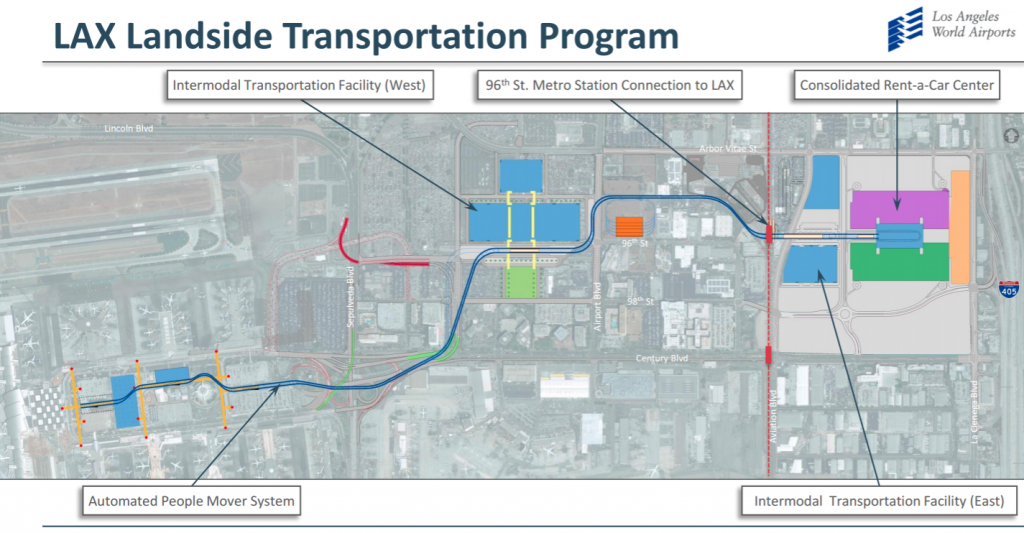Last week, LAX airport officials unveiled their plan to connect light rail to the airport via an automated people-mover (APM) system like you see in airports around the world. As The Source reports, the proposal involves:
[T]hree APM stations in LAX’s central terminal area. One station would serve Terminal 1, 6 and 7, the next station would serve Terminals 5 and 6 and the last station would serve the Tom Bradley International Terminal and Terminals 3 and 4. Moving sidewalks would be used to help passengers get from the stations — which would be within the terminal horseshoe road — to the terminals….
[I]t will also stop at a new Intermodal Transportation Facility that will have parking, serve as a shuttle bus stop and pickup and drop-off area for passengers. The next APM station would be at the Aviation/96th Station for the Crenshaw/LAX Line — a station that Metro will build that is planned as being terminal-like and much more robust than the usual light rail platform.
The final APM station would serve a consolidated rental car facility to be constructed east of Aviation Boulevard. As the name implies, the facility would bring together the more than a dozen rental car companies that serve LAX. Airport passengers would use the APM to reach rental cars, thereby removing the need for shuttles from rental car companies to endlessly circle the horseshoe road serving the airport terminals.
 Officials hope to start construction in 2017 or 2018, with the process taking a ridiculously long “five to seven years.” Notably, airport officials want to meet the potential deadline of the 2024 Summer Olympics. Nothing like public scrutiny on the Olympics to force agencies to hurry up with their projects!
Officials hope to start construction in 2017 or 2018, with the process taking a ridiculously long “five to seven years.” Notably, airport officials want to meet the potential deadline of the 2024 Summer Olympics. Nothing like public scrutiny on the Olympics to force agencies to hurry up with their projects!
Joe LInton at Streetsblog is concerned there’s too much parking included in the project (8000 spaces potentially). But to me, there’s a lot to be happy about with these plans. First, the people mover was always the best way to connect to light rail, as opposed to an expensive and less useful direct rail connection. Second, the plan will greatly reduce traffic in the central terminal area by removing the need for terminal circulator and rental car shuttles. Finally, the off-site parking may allow the airport to get rid of parking in the central terminal area, which would free up space for more traveler-focused amenities, such as a hotel and lounge area (plus removing a security threat).
Environmental review may begin next year. Let’s hope this plan doesn’t get too compromised and end up getting too expensive. The $6 fare for the Oakland airport connector is certainly a cautionary tale in this respect. But it looks like a solid start for the airport — if you don’t mind waiting ten years for it to open.


